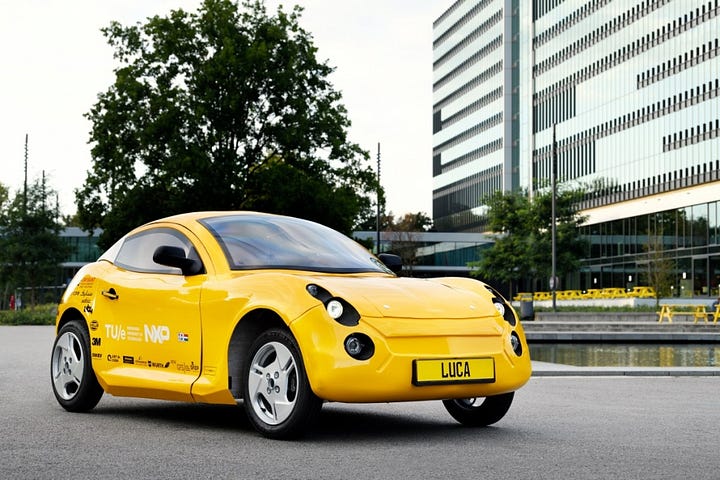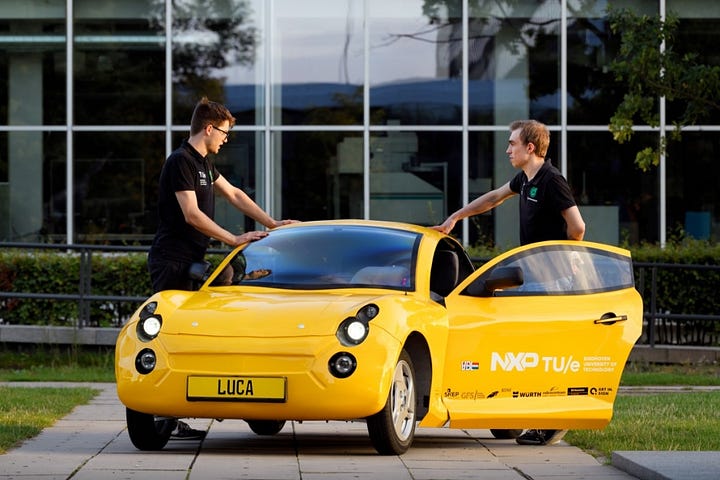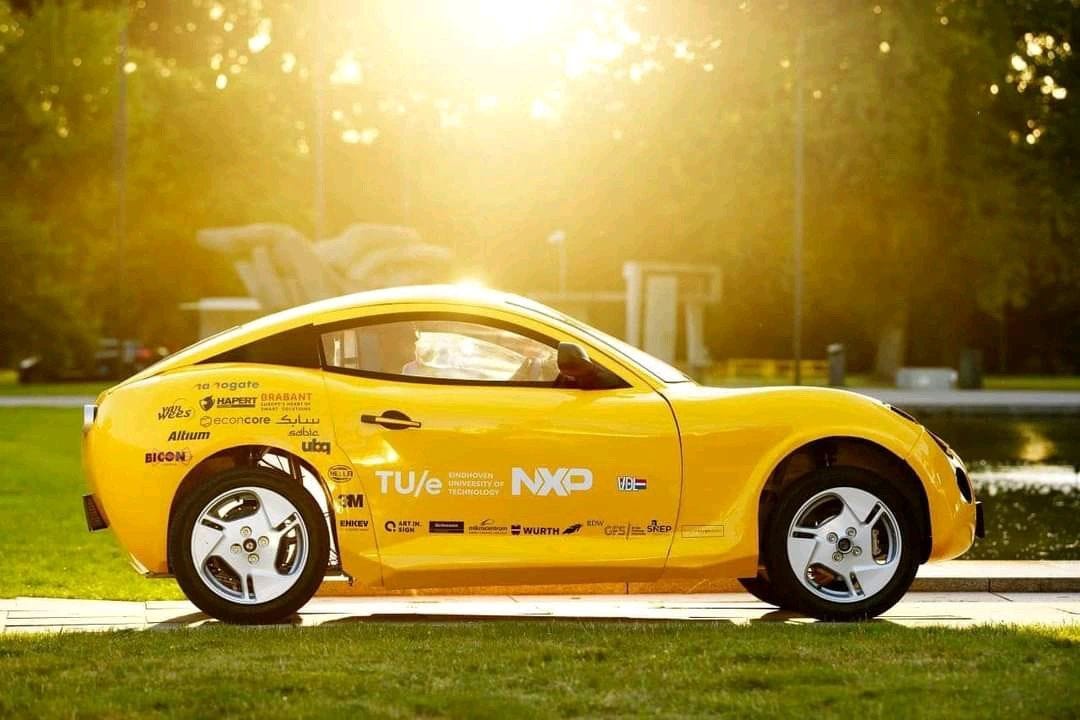The Future of Cars?
made entirely from 'waste'
Students from the Eindhoven University of Technology have produced a car called 'Luca' made entirely out of waste. 🤯
It is not only used PET bottles and household waste, but also plastic recovered from the oceans, horse hair, coconut fibres and flax.
Luca’s chassis is made out of flax and recycled plastics, of which the plastic is taken straight from the ocean. Also, the body, finish, windows and interior are made out of recycled materials like PET-bottles, ABS and even refined household waste.
The implementation of waste, however, does not end there.
For example, the body of the car is made out of recycled ABS, a hard plastic used in lots of consumer products, like toys, televisions and kitchen products.
The car gets its yellow color because of a wrap, a colored foil, instead of a paint job. This foil can be removed without leaving any residues.
This leaves a clean plastic that requires little to no refinement in its recycling stream.
The side and rear windows are also made out of recycled materials.
The recycling process gives the windows a luxurious, black tint. Sustainability can be anything but boring.
22 students worked on the project for a year and a half.
They wanted to show the car industry that waste can actually serve as a new raw material. 💁♂
It is relevant - because European car manufacturers consume more than one million tonnes of plastic a year.




The car reaches a top speed of 90 kilometers per hour and a range of 220 kilometers. Besides the efficiency provided through its electric drive train, a great deal of Luca’s efficiency comes from its lightweight construction: the car only weighs 360 kg without batteries. That is more than half of the weight of comparable cars.
Besides, this the car only requires a total of 60 kg of batteries, which in comparison to the hundreds of kilograms for other electric cars, stands as another attribute to its resourceful design.
Such a car made from waste will not be in the showroom tomorrow, but is surely very inspiring for the industry.
What do you think of this innovation?



